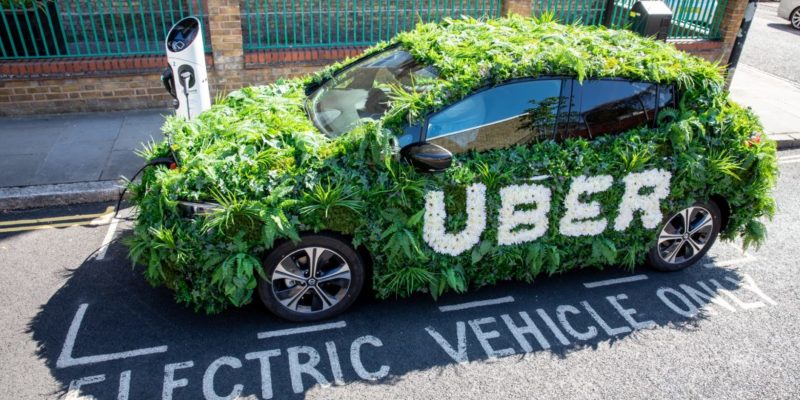British-American electric van and bus specialist Arrival will partner with global ride-hailing giant Uber to design and develop an affordable electric vehicle (EV) purpose-built for ride-hailing drivers, which is expected to enter production in the third quarter of 2023.
Currently creatively named the “Arrival Car”, Arrival will now invite Uber drivers to join the design process so that the final product meets the specific needs of ride-hailing drivers.
Arrival and Uber are joining forces to address what they see as the global need to shift the ride-hailing and car sharing services sector – with over 30 million estimated drivers globally – to electric vehicles to reduce emissions and improve air quality in cities.
Typical ride-hailing vehicles will on average drive between 45,000 and 50,000-kilometres each year – as compared to the average 12,000-kilometres for a typical vehicle.
The Arrival Car will take this into consideration, as well as prioritising drive comfort, safety, and convenience, as well as ensuring that their passengers enjoy a premium experience.
The consultation process between Arrival and Uber drivers is expected to design a car that reflects the needs of professional drivers and their passengers, and we should expect to see a final vehicle design by the end of the year.
“We are confident that electrifying ride-hailing vehicles will have an outsized impact on cities, and we are keen to support drivers as they manage this transition,” said Tom Elvidge, SVP Arrival Mobility UK.
The purpose-built ride-hailing Arrival Car is not the only focus for the Hyundai-backed Arrival, having unveiled its all-electric Arrival Bus design last year to join its Arrival Van.
Arrival came out of stealth mode in January 2020, announcing that Hyundai and Kia had taken stakes in the company that boosted its value to almost $A5 billion.
The company almost immediately took an order for a fleet of 10,000 Arrival Vans for delivery company UPS, and in June the company unveiled its Arrival Bus plans, which are intended to transform the public transport industry.
The Arrival Bus, announced as it was in the growing clamour of the global COVID-19 pandemic, will also seek to address the new normal of germ-conscious citizens while also seeking to “make bus travel appealing, sustainable and financially viable.”
Arrival benefited several months later from a significant $US118 million ($A165 million, converted at the time) funding round managed by global investment giant BlackRock which will be used to support the company’s expansions plans, including the launch of its recently-announced first US micro-factory.
Uber has committed to becoming a fully electric mobility platform in London by 2025, and by 2030 across North America and Europe. Since the launch of Uber’s Clean Air Plan in London two years ago – which added an additional fee of 15p for every mile travelled in London – the company has raised more than £135 million to support drivers with the cost of switching to a fully electric vehicle.
And in March, Uber launched Uber Green in London, giving passengers the option to select a fully electric vehicle as their chosen ride at no extra cost, while drivers also pay a lower service fee.
Importantly, Uber Green’s operation in London is no small thing, considering that more than 3.5 million trips have taken place in London in fully electric vehicles, significantly helping to reduce notoriously bad emissions and air quality.
“As our cities open up we have an opportunity to make sure that urban transport is cleaner than ever before,” said Jamie Heywood, Uber’s Regional General Manager for Northern and Eastern Europe.
Uber announced on Monday the next phase of its Clean Air Plan, committing to helping double the number of drivers in EVs by the end of 2021. Drivers will be able to purchase or lease vehicles at discounted rates thanks to our partnerships with Nissan, Hyundai, Kia, Otto, and WeFlex, while also being able to use BP Pulse’s public charging network at a discounted rate.
Joshua S. Hill is a Melbourne-based journalist who has been writing about climate change, clean technology, and electric vehicles for over 15 years. He has been reporting on electric vehicles and clean technologies for Renew Economy and The Driven since 2012. His preferred mode of transport is his feet.

